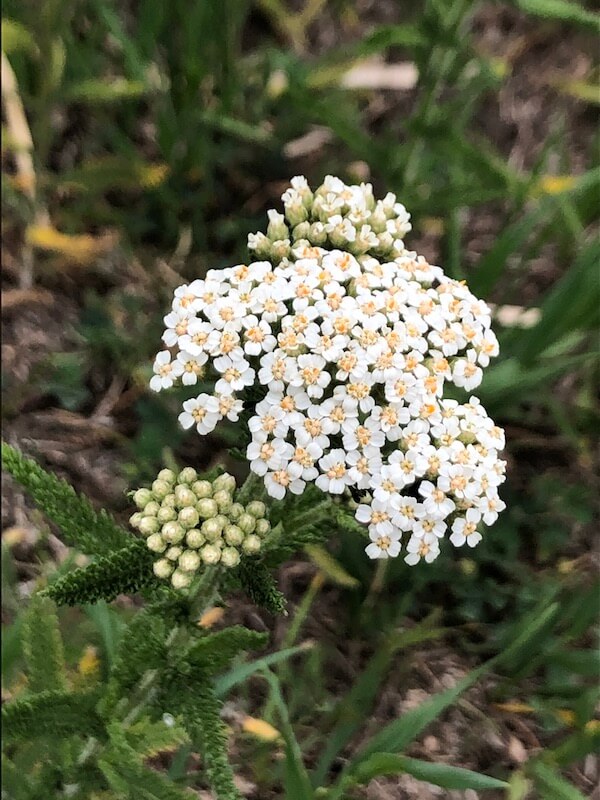



Along roadsides, in parks, in neighborhoods, and on long, country drives, spring, summer, and fall in the Great Plains can be surprisingly colorful if you know where to look. Though from a distance tallgrass prairies may seem homogenous and uninteresting, looking up close can reveal an incredibly diverse ecosystem of plants and animals. Very little tallgrass prairie remains intact throughout the Great Plains in the central United States, but you can still find small pockets of native plant growth along roadsides, in lightly grazed fields, in highway rest areas, and in parks.

Slowing Down and Learning Names
Despite growing up among these species, it wasn’t until I became sick and was forced to slow down that I began learning the names of the plants around me. When I go hiking now, I often bring a foldable stool with me which serves two purposes:
- A easy place to sit and rest whenever my legs and muscles need a break, as many outdoor locations don’t have seating available (or, in this case, I often find these flowers in unexpected locations)
- A place to take my time to flip through my field guide. No feeling rushed here! With a chair, I’m closer to the ground and can more easily be at eye level with a lot of these plants, which helps me to identify and recognize them more easily.
The heat of summer in the Great Plains can also pose a problem for being out and about doing wildflower viewings. During these times I may not be able to go on explicit wildflower viewing hikes, and instead opt to keep my eye out for plants while on drives to town, work, etc. This means I can stay in the air conditioning most of the time and that I often find wildflowers in new locations I know to revisit next year!




Operating with limited mobility may mean I often have to stick closer to home, but it also means that I am easily able to notice and recognize seasonal patterns in my local plant life. Not only am I more familiar with the wide variety of species in my area, but I can also more easily detect subtle changes in the plant life closest to me. This gives me valuable information about what is happening in my local ecosystem, strengthens my connection with nearby plant life, and helps make me a more keen observer and appreciator of nature.
Activity Idea: Plant Journal

Pick a place outside near you that you can access easily. If you aren’t able to get outdoors, pick an area or plant you can see from a window, whether it is a tree, a patch of grass, area next to a sidewalk, etc. You could also have a friend or companion go out and take pictures of the area that they can send to you. They can also give you visual descriptions of the area or the plant species.
Find a place (like a journal, word document, or voice notes) where you can record your observations of the place or plant you’ve selected. Aim to make observations once a week (but of course modify this to suit your needs and interests!) Consider taking note of:
- Any changes to the plant or natural space you’ve selected. How has it changed visually? Think about color, size, and shape. How does it smell? Have the textures of the leaves changed? What new details about a plant did you notice?
- The surrounding area. Is it quiet? What kinds of plants are there? Are there animals or insects around you can see or hear?
- The weather. Is it hot and dry? Cloudy and humid? Does it seem like it has rained a lot recently?
- How you feel. What does observing, hearing about, or being in that place make you feel? What pops into your mind? What questions come up? What do you wonder?
If you can, include photos or drawings of the plant or natural area you chose.
Determine how long you want to observe your plant or natural space. I chose to record wildflowers in my area for a year, and then made a chart at the end of the year that told me when I could expect certain wildflowers to bloom and when.

After you’ve observed for the amount of time you want, ask yourself some questions:
- What patterns did I notice?
- What surprised me?
- What did I learn about my plant or natural space while doing this? What do I still want to know? How can I find out what I want to know?
- What did I forget to observe? What am I missing?
Use your answers to the questions about to determine what you want to observe next! By doing this activity, you are engaging in naturalist observation of your surroundings – and will help you to become more connected and informed about the natural world around you!
By Disabled in Nature


